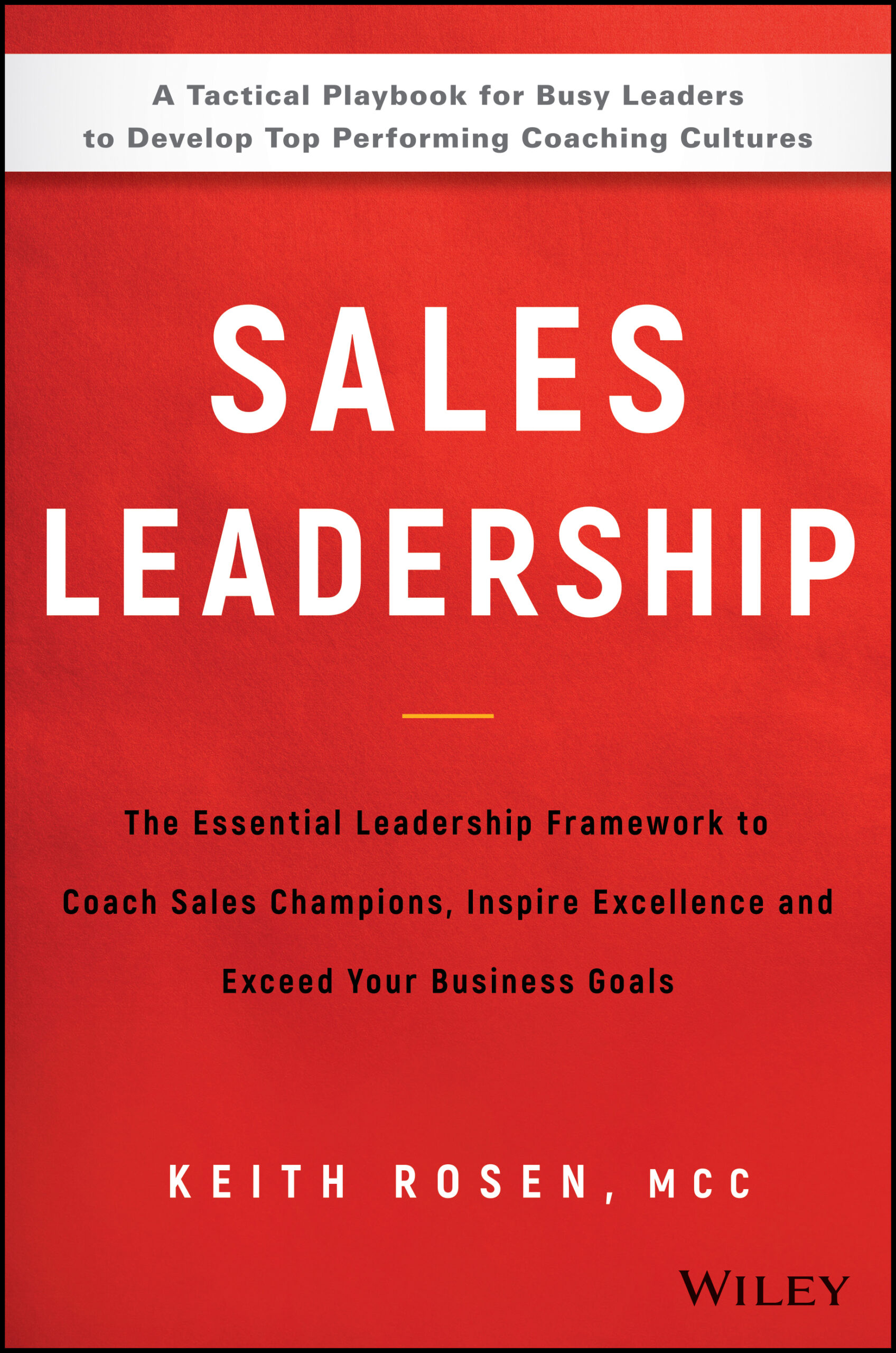Your salespeople may have their goals for the year, but are they open to having you coach them to success and being fully accountable for their results?
This article isn’t about setting goals. It’s about the conversation that often goes overlooked which will determine whether or not that salesperson is truly positioned for success. It’s the deeper conversation between management and salespeople that needs to take place after the goals are set—a conversation that not only covers strategy, alignment of personal and business goals, and responsibilities but encapsulates everything to ensure that expectations around performance and personal accountability are clearly set, managed and aligned to ensure success throughout the year.
What follows is a brief outline and the questions you need to ask in order to effectively conduct this conversation so that each direct report can develop a clear path they can follow to achieve their goals. Fine tune this outline to best fit your situation and the needs of each salesperson. Keep in mind, this strategy will work best if:
- Clear expectations around coaching have been set.
- You are already effectively and consistently coaching your people – and you have feedback and evidence to support that.
- They’re bought into being coached by you.
- You have a relationship built on trust, not seniority nor obligation with your people.
Of course, while there are best practices to effectively facilitate this conversation, there’s not necessarily one ‘best’ way. So, adjust accordingly to ensure it works for you.
These 6 steps will create the trust, alignment, strategy, messaging, accountability and collaborative focus needed to create the breakthroughs you want in 2015!
Step 1: Schedule and Enroll
This is a conversation that’s too important to rush. After all, planning and training for the race always take longer than the race itself. Schedule at least a one hour meeting with each direct report, letting them know the intention of the meeting and most important, what’s in it for them. Otherwise, if you fail to set proper expectations and create the shared alignment around a common goal, you’re leaving it up to your direct reports to form their own conclusions as to why you’re meeting with them. The risk here is, even if your intentions are selfless and pure, when people aren’t aware of what your intentions are, especially if you’re the boss, the default file for every human being is fear!
Step 2: Set Expectations of the Meeting
Set the expectations and objectives for the meeting. Building off step one, before you dive into this conversation during your scheduled meeting, it’s important to ensure expectations are aligned. Here’s how you can do that.
- “What I want for you is to achieve the level of success and personal fulfillment that you want in your career. That’s why the purpose of our time today is to discuss your goals, how I can best coach and support you around achieving them and together, develop the best strategy that’s going to enable you to achieve the results you want, while honoring the priorities in your life, okay?”
Step 3: Gauge Their Commitment and Point of View
Discuss the goals that have been set. Here are some examples of questions to ask.
- How do you feel about your goals and business objectives?
- How did you come up with that goal? (Skip this question if goals are assigned to your direct reports.)
- How confident are you about achieving your goals?
- Why? What’s making you feel that way?
- (If you sense resistance to the goal…) We can either focus on the things that you can control or the things you can’t. I’d rather focus on the things you can control so that you can achieve the goals you want, okay? So, what are the things that you have 100% control over that will enable you to achieve your goals? (Hint: there’s only three things. Their attitude, their actions/behavior and their reactions! Then follow up with the following question.)
- What are the opportunities you see for your own development that if you can improve or change, would make you more effective – if not unstoppable?
- What would it mean to you if you achieved these goals? (Personally/professionally)
Step 4: Assess Strategy and Identify Coaching and Developmental Opportunities
If there are multiple goals, walk through one goal at a time.
- Walk me through your strategy for achieving each goal.
- What do we need to be mindful of that could get in the way of achieving your goal?
- What’s your opinion on how to handle this? (Everyone has an opinion. Remember, an opinion is different from a solution. Seek to understand theirs first, without judgement, before you start sharing your opinion.)
- What’s the first thing you need to do to start working towards achieving this goal? (Goals can be overwhelming. Give each person the time and space to break it down to one manageable step at a time.)
- What would the conversation sound like when you call on your new prospects?
- What is the actual message you’re going to use when you approach your existing contacts and ask for referrals into other divisions of the company?
- What are the questions you are going to use to qualify each opportunity?
Tip from the Coach: Coach The Message! The Big Miss for managers is stepping over the myriad of opportunities to coach your people on their message—their ‘languaging,’ their communication.
- What resources do you need?
- Who else do you need to collaborate and be aligned with, both internally in our company and with the customer, in order to achieve this goal?
Step 5: Uncover Motivation and Build Accountability
Tap into their individuality. Rather than make costly assumptions, uncover what uniquely motivates each person, how they want to be managed as well as how they want to be held accountable around their goals and commitments.
Facilitate this conversation using the following questions:
- What are the parts of your goals and your job that you’re most excited about?
- What motivates you to come to work every day?
- If you didn’t have to work, what would you do with your time?
- How do you like to be acknowledged for a job well done?
- What skills would you like to develop that would advance your career?
- Who are the people you need to develop a better relationship with this year in order to reduce problems or breakdowns and achieve greater results?
- What kind of personal brand do you want to build here?
Here are a few additional questions to build further accountability around their role and goals.
- How do you like to be managed and supported so that you can achieve these goals?
- How can I hold you accountable around your goals in a way that will sound supportive rather than negative?
- How do you want me to approach you if you don’t follow through with the commitments you make? What would be a good way to bring this up?
Step 6: Create and Schedule the Coaching Cadence
Debrief and discuss next steps to build ongoing momentum. Finally, before concluding the meeting, take their pulse and gauge their reaction and feelings around the conversation.
- So, how are you feeling about our conversation?
- What’s standing out most for you?
- What new opportunities are you most excited about?
- What concerns, if any, do you have moving forward?
- To reconfirm next steps, what are you going to be working on next?
- Let’s go ahead and schedule our next meeting.
- What are you willing to commit to having completed by then?
- I’m looking forward to working with you so that you can achieve your goals this year!
Space Creates Breakthroughs
Keep in mind, the questions you ask are only as good as the answers you get, so give each person the space to answer each question. When asking these questions, make sure they answer your questions completely. Listen deeply to their response so that you’re crafting relevant follow up questions based upon what you hear. Remember, some of these questions are questions you never asked them. Additionally, many of these questions are ones that your direct reports have never been asked their entire career! That’s the exciting part about coaching; the creation of entirely new possibilities that you or your direct reports never imagined.
So, don’t rush people through this critical conversation. Give each person the time to self-reflect in order to gain valuable perspective on where they are now and where they want and need to be. As a manager, it’s critical that you respect this important process of self-discovery.
After effectively facilitating this conversation, you and each individual on your team will have a greater sense of confidence, a stronger focus around shared goals and an aligned, collaborative strategy that will create the most significant year yet for your company, your team, and yourself.
Photo Credit: marekuliasz (via Shutterstock)



